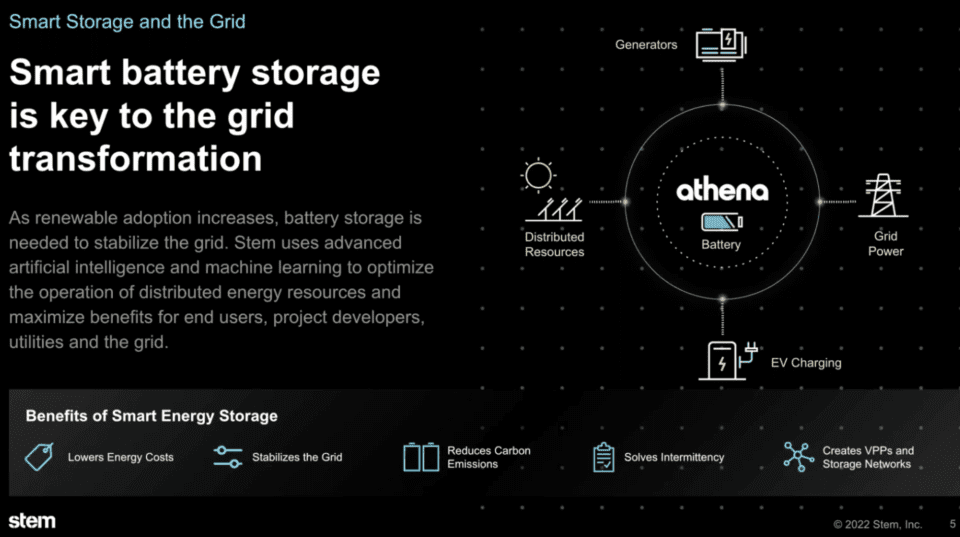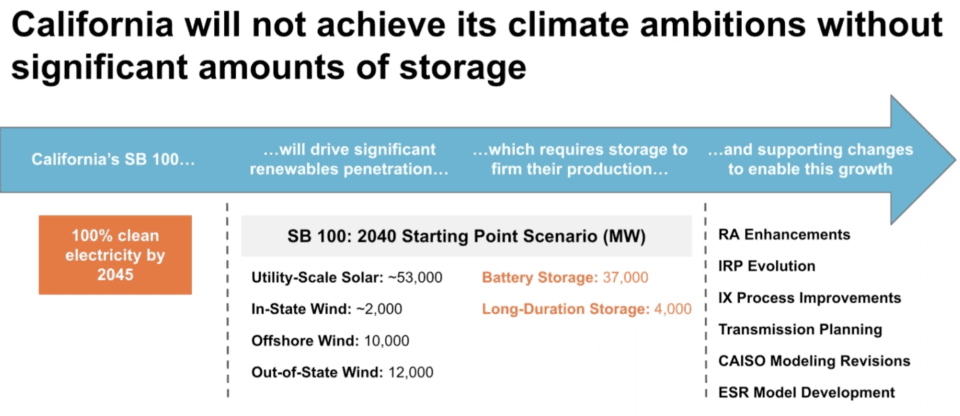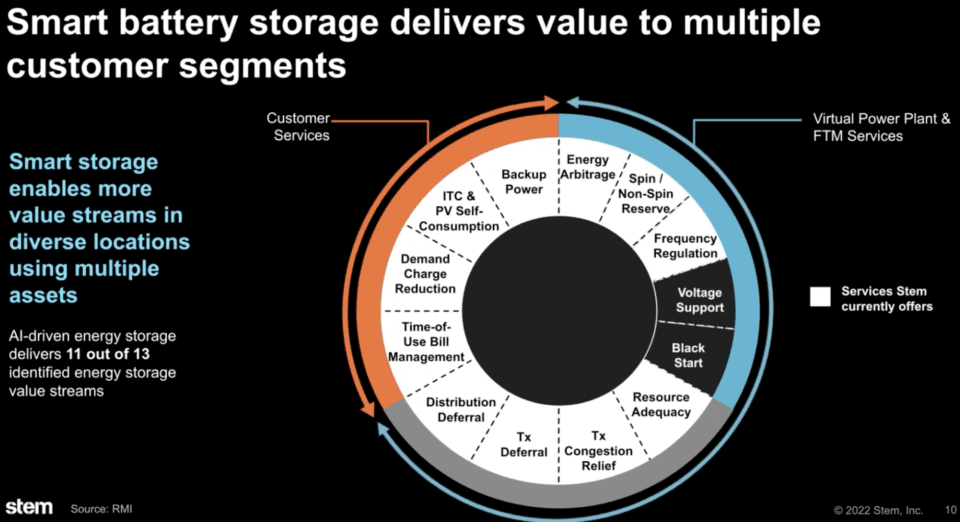Presented by Stem’s Mike Alter and Carolyn Collins
Stem works with Community Choice Aggregation (CCA) electricity providers looking to deploy smart energy storage. In May 2022, leaders from the Stem team presented a webinar — now available on demand here — about how energy storage can be used by CCAs. While we encourage you to watch the full recording, here is a short summary of the discussion.
About Stem
Stem provides AI-driven energy storage software services to commercial customers, utilities, and a whole range of other end users. We were founded in the San Francisco Bay Area and we have a significant presence in the California market and we bring a tremendous amount of expertise for both behind-the-meter and front-of-meter projects. This year, we acquired AlsoEnergy, the leader in solar performance monitoring and optimization software. Together, with AlsoEnergy, we have over 32.5 GW hours of solar and energy assets under management. We’re really excited for the opportunity to help our customers that have both solar and storage by ultimately combining insights from both types of assets to optimize their performance goals accordingly.

Drivers of energy storage value for CCAs
When we think about the electric grid of the past, it had the objectives of preserving reliability and minimizing costs. The grid under this planning paradigm relied almost entirely on centralized or fossil-fuel generated electricity, transmitting it to load pockets and ultimately serving end users and customer demand. That resulted in one-way electricity flow and in-elastic customers who weren’t able to modulate their consumption. Today, this paradigm has totally shifted with the introduction of carbon reduction goals and advancements in technologies. With the continued deployment of intermittent renewables, both large scale and distributed, the grid has to become more dynamic and centralized. While this presents a challenge to the historical ways of operating the grid it also creates a really bright opportunity for battery storage to help mitigate the added complexity while still preserving system reliability and achieving carbon reduction goals all while minimizing costs.
California is a global leader in driving tangible action on climate change. Most notably of these efforts is the passing of SB 100 back in 2018, which requires 100% clean electricity by 2045 with an interim target of 60% of procured energy coming from renewables by 2030. Achieving these milestones will ultimately require some explosive growth of renewable resources, including approximately 2.8 GW of solar and .9 GW of wind per year through 2045. While these resources will provide the clean energy that we need to decarbonize the grid, their intermittent nature presents some real operational challenges. That’s where energy storage and battery storage becomes critical. Its flexibility enables renewables integration both in terms of real-time balancing as renewable outputs fluctuates and also load shifting to better match production with load. That’s why there’s an expected need for approximately 2 GW of battery storage per year through 2045 to successfully integrate all of these renewable resources that will be coming into the grid in the near future.
In order to achieve all of this renewable and battery storage growth at lowest cost, a slew of changes are required to move some of these batteries to deployment but also ensure that market signals align with the value of these resources are ultimately able to deliver to the grid.
The list shown on the right of the below figure is not meant to be exhaustive, but there are really important efforts underway to address these gaps and that includes rethinking the Resource Adequacy (RA) – a program to ensure sufficient resource capacity for 24/7 reliability. There’s also a potential shift to a more programmatic procurement approach through the RFP process that accounts for both reliability and greenhouse gas (GHG) reduction goals. And then also really importantly are improvements to the interconnection process to enable a timelier and less costly process to connect renewables and storage to the grid.

What makes battery storage so valuable is being able to deliver value across all levels of the grid, and that’s why so many people refer to it as the swiss army knife of the electric system.
At the end of the day, Stem is uniquely positioned to deliver these services, both for customers and the grid more broadly. The natural question that follows is, how does this all impact CCAs and what should CCAs be focused on when it comes to battery storage? At the core, CCAs need to procure a sufficient energy supply for its customer base with an increased focus on clean energy resources. Today, a large portion of this procurement has come from large-scale resources such as standalone storage, or storage paired with solar, but CCAs also have a growing opportunity to be engaged with their customers and offer programs that provide customer benefits such as bill savings, but then layering on top benefits like RA.
Creating easier to quantify economic benefits for the customer allows for the CCA to create stickier relationships. That’s really important to support long-term revenue acquisition but also enables local economic development and job creation.
It’s helpful to note that this is an opportunity to leverage intelligent software, like Stem’s Athena, to tap into and ultimately maximize the value of the potential of battery storage. Including through the operation of a Virtual Power Plant (VPP) that can combine both behind-the-meter and front-of-meter assets to deliver a range of services as shown below.

For more details and the Q&A, watch the full webinar on demand here. To get started, complete the form below and a Stem team member will be in touch soon.